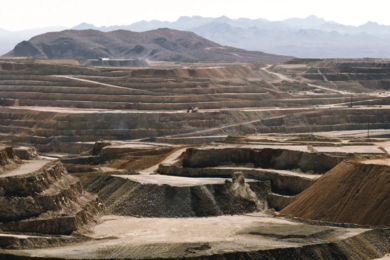Byron Knelson (1930-2011) developer of the Knelson concentrator and a titan of gravity separation will be inducted in the concentration category at the gala dinner in the Brown Palace Hotel, Denver on February 16 (www.im-halloffame.com). Almost 40 years ago a pursuit to discover a ‘better way’ would revolutionise the application of gravity separation in the gold mining industry. Today, this application continues to improve cashflow for operations around the globe. In the Yukon in the mid-1970s at an alluvial gold mine at Eureka Creek, Knelson witnessed a crude, but widely used sluicing operation that would recover coarse nugget gold but was ineffective for the recovery of the accompanying fine gold grains. He spent a total of five days at the site then returned to his home in Burnaby B.C. and set out to find a better means to recover fine gold. In 1976 he tested the first crudely built fluid-bed prototype centrifugal concentrator at an aggregate plant in the Fraser Valley. Although the first unit lacked mechanical refinement of today’s carefully engineered units, the metallurgical performance of the unit set him on what would become an exciting and passionate 25 year journey that resulted in the commercialisation of what has become an icon in the mineral processing industry in Canada and abroad – the Knelson Concentrator. Over the 30+ years since the first crudely manufactured Knelson Concentrator was produced, the machine has become a fixture in many of the world’s most prominent gold mines. The technology is now owned by FL Smidth, which is the sponsor this year of the Environmental Management and Stewardship induction. The Knelson Concentrator is a centrifuge that combines enhanced gravitational force with a patented water injection process to create a fluidised concentration surface into which fine gold grains, due to their high specific gravity, can penetrate and become trapped. The original device operated at 60 G forces; and 30 years later extensive research has proven that for 90% of traditional gravity gold applications, 60 Gs has proven to be near optimum. The original Knelson Concentrator was called the MD, or Manual Discharge Series. The machine would operate for a fixed cycle time generally ranging between six to eight hours at which time the feed to the plant would be stopped, the machine would be shutdown, a drain plug removed and gold-laden concentrates would be manually rinsed from the concentrating cone. While this procedure took only a few minutes to complete, it presented serious operating concerns, personal safety issues and security risks to the much more sophisticated hard rock gold mining fraternity. This problem was overcome in 1992 with the advent of the Centre-Discharge feature which enabled the hands-off operation and fully automated control of the removal of concentrates and all process variables. In the mid 1990s, the Center-Discharge, or CD Series Knelson was advanced by the introduction of the eXtended Duty, or XD Series. The XD had some features not available in the CD Series, mainly for ease of maintenance and longevity. In 2010, Knelson’s newest design, the Quantum Series, was introduced, which again advances the design further, while also reducing the cost. In the late 1990s, the Knelson Continuous Variable Discharge, or CVD Concentrator was commercialized. This concentrator is designed to produce a continuous stream of concentrate and targets higher mass yield applications such as gold sulphide and heavy mineral recovery where higher mass to concentrate is required.









